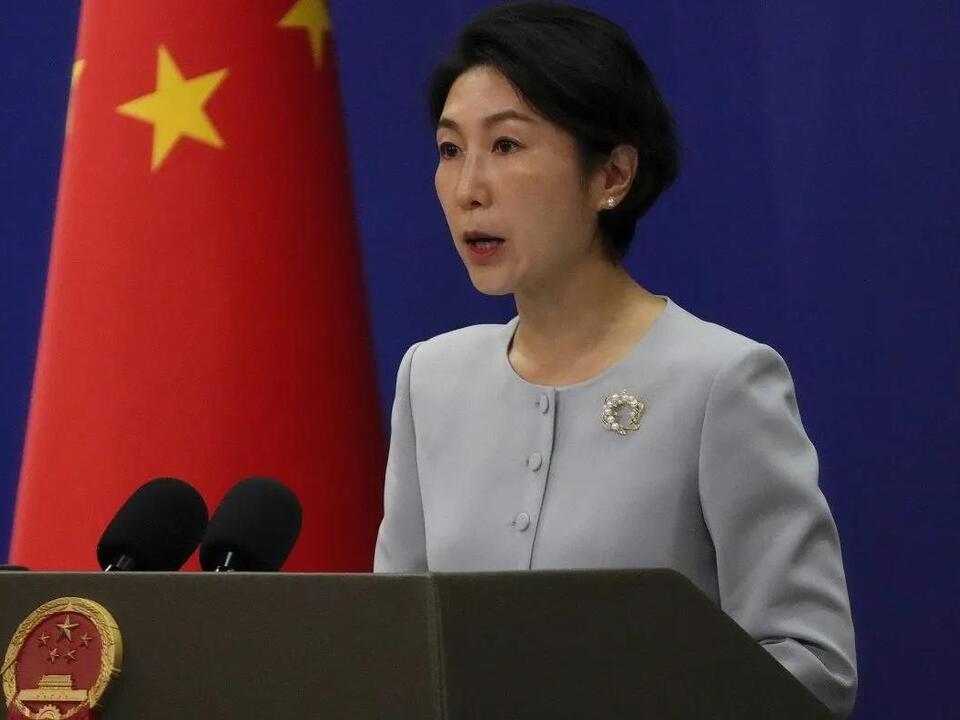Physical Address
304 North Cardinal St.
Dorchester Center, MA 02124
Physical Address
304 North Cardinal St.
Dorchester Center, MA 02124

China expressed significant concern following a report from The New York Times that indicated President Biden had discreetly altered U.S. nuclear strategy to prioritize countering China.
During a press conference, Chinese Foreign Ministry spokesperson Mao Ning stated that the U.S. is utilizing the notion of a Chinese nuclear threat as a “convenient pretext” to evade its nuclear disarmament obligations, simultaneously expanding its nuclear arsenal and striving for absolute strategic dominance.
Mao emphasized that China’s nuclear arsenal is not on par with that of the U.S. She reiterated that China maintains a policy of no first use of nuclear weapons, focusing its nuclear strategy on self-defense and keeping its nuclear capabilities at the minimum level essential for national security.
Accusing the U.S. of being the primary aggressor, Mao highlighted that the U.S. possesses the largest and most advanced nuclear arsenal in the world and is engaged in a swift modernization of its weapons. She voiced criticism over the U.S. maintaining a first-use policy, despite U.S. assertions that any use of mass destruction would only occur in response to severe aggression or invasion.
This week, Chinese state media also published articles blaming the U.S. for rising nuclear tensions and urging the Pentagon to halt its escalation of an arms race.
The report from The Times revealed that in March, President Biden approved a highly classified nuclear strategic plan, marking the first time the U.S. strategy explicitly addressed China’s growing nuclear capabilities.
This strategic document, part of an update on nuclear policy conducted every four years, also contemplates the increasing threats posed by coordinated nuclear challenges from Russia, China, and North Korea.
Currently, the U.S. and Russia hold the most significant nuclear stockpiles, but China is rapidly advancing, with Pentagon officials predicting that Beijing could achieve a total of 1,000 nuclear weapons by 2030.
The Biden administration recognizes the escalating threat from China’s nuclear capabilities and the necessity of a response. This strategic shift reportedly enjoys broad support among lawmakers in Washington.
In a June address, Pranay Vaddi, a senior official for arms control at the White House’s National Security Council, communicated that the U.S. had indeed adjusted its strategy to prioritize China and address the challenges posed by nuclear-armed states.
He characterized the current security environment as “a new and dangerous era” marked by evolving proliferation risks alongside rapid technological changes. Vaddi affirmed that the U.S. has modified its strategy to reflect a more complex and deteriorating security landscape while maintaining its core principles.
Vaddi noted, “We are adopting a more competitive approach,” while asserting that the U.S. intends to continue its focus on preventing the use of nuclear weapons and will only invest in the necessary deterrents.
Simultaneously, the U.S. is undertaking a more than $1 trillion modernization of its nuclear triad, involving the development of new intercontinental ballistic missiles, bombers, and submarines. However, challenges have emerged, including soaring costs for the new Sentinel missiles, alongside complications related to the B-21 Raider and the Columbia-class nuclear submarines.
As nuclear strategy tensions rise, it remains imperative for global powers to navigate these changes in a manner that promotes stability while addressing the complexities of modern security challenges.
Source: The New York Times